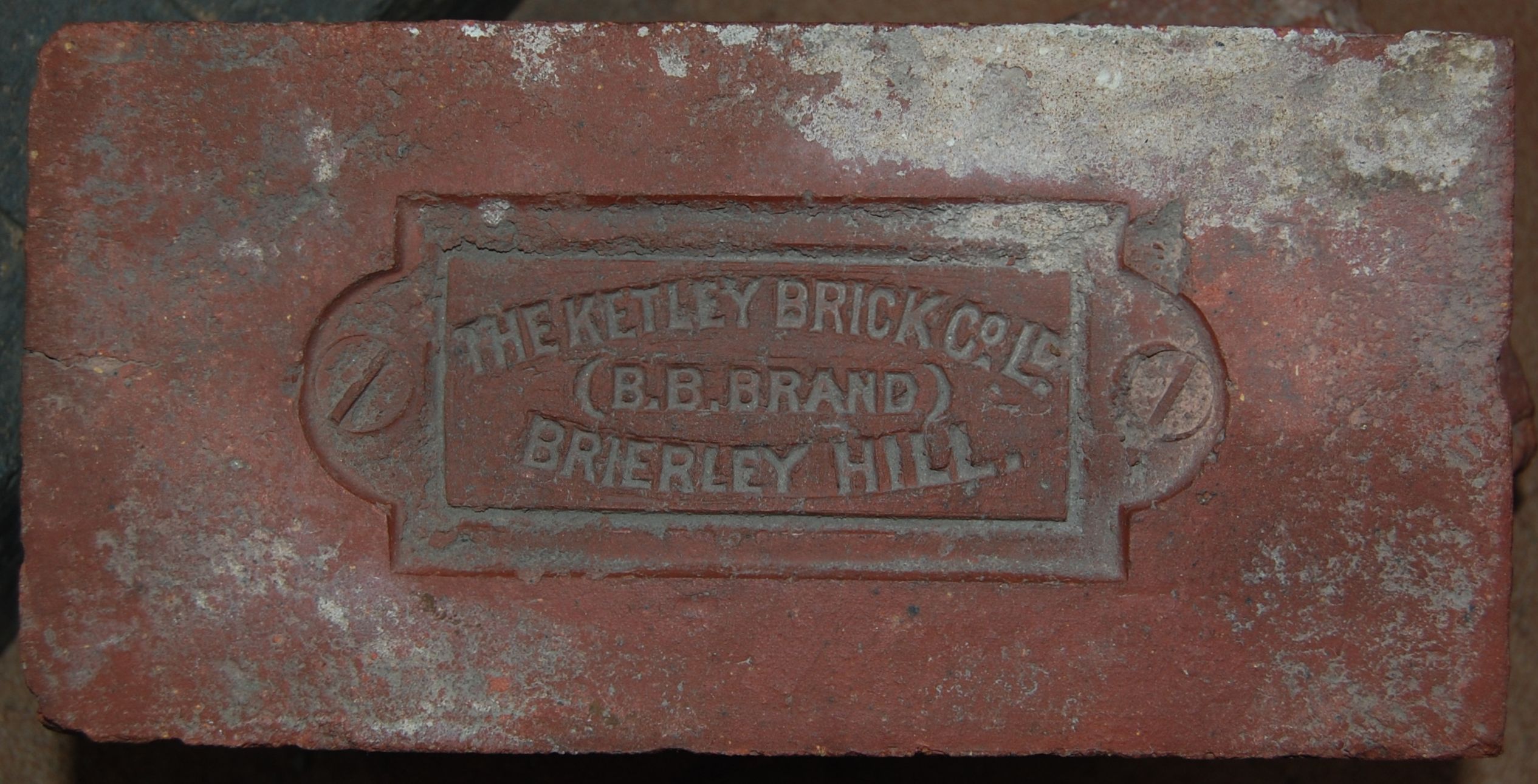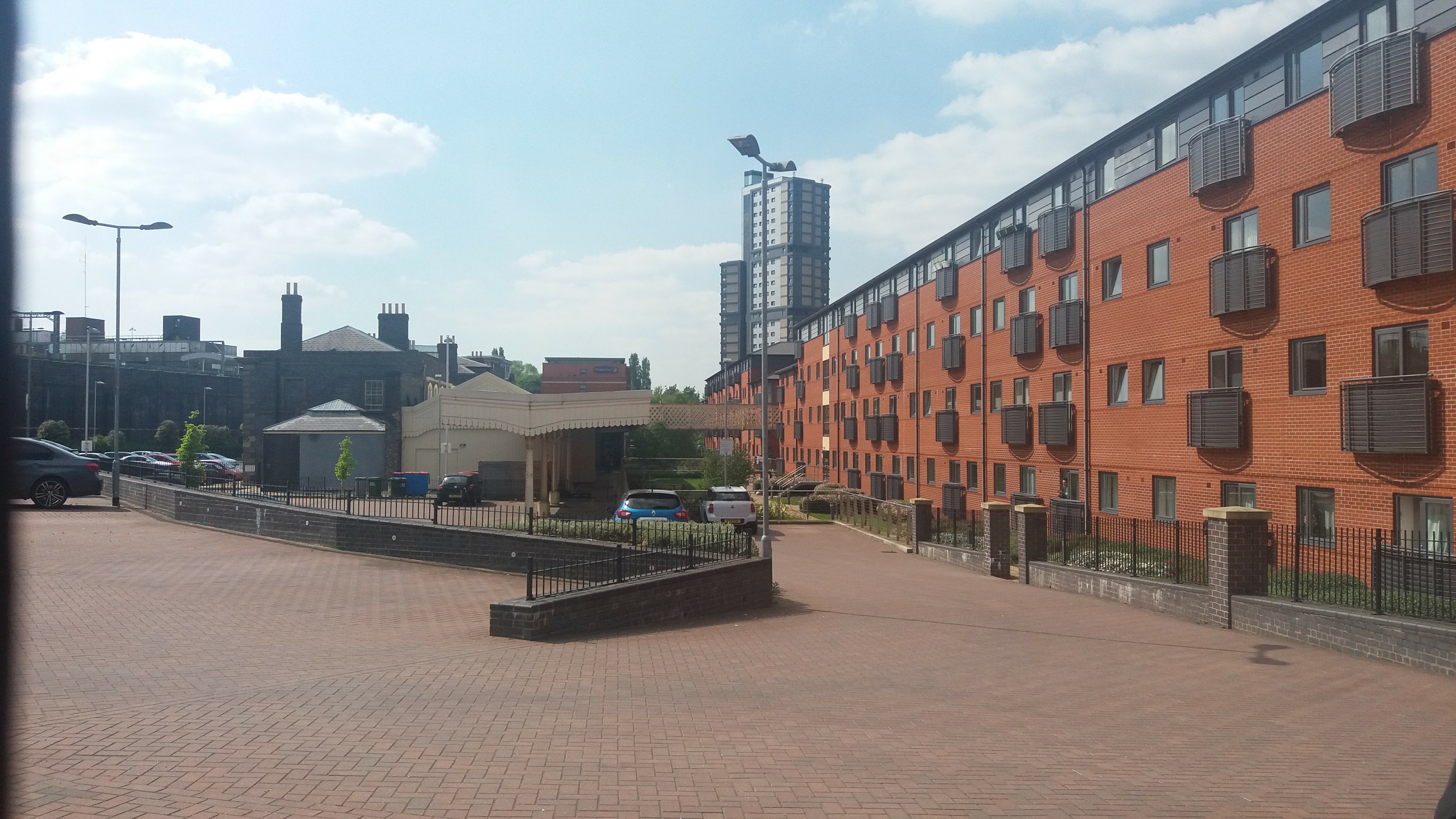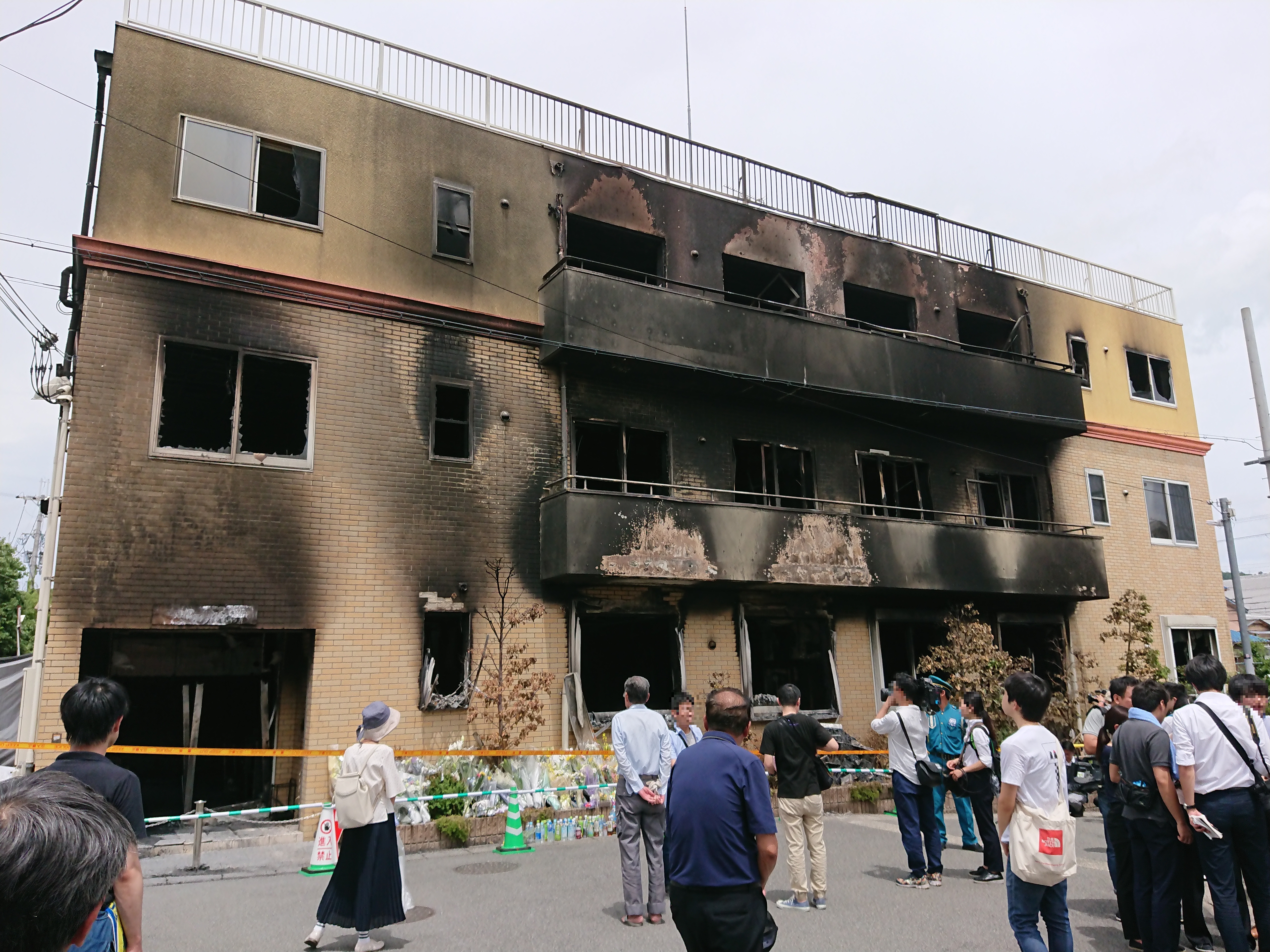|
Brettell Lane Railway Station
Brettell Lane railway station served the town of Brierley Hill, in the West Midlands (County), West Midlands, England. It was a stop on the Oxford-Worcester-Wolverhampton Line History The station was opened in 1852 by the Oxford, Worcester and Wolverhampton Railway. Local coal mining and steel mills led to rapid industrialisation of the area and heavy usage of the station in the early 20th century, but passenger numbers had declined badly by the 1960s. The line had reasonable passenger usage until about the early 1880s, when it began to slump at several stations, leading to the line becoming a largely freight only operation in 1887. It would remain open for goods traffic, which was considerable at this time, as the district had become highly industrialised in the then heyday of the Black Country's industrial past. As the local industry declined and road transport became more common, the station entered a post-World War II decline. Accident In 1858, a coupling bro ... [...More Info...] [...Related Items...] OR: [Wikipedia] [Google] [Baidu] |
Brierley Hill
Brierley Hill is a town and Ward (electoral subdivision), electoral ward in the Metropolitan Borough of Dudley, West Midlands (county), West Midlands (originally in Staffordshire), England. It is located south of Dudley and north of Stourbridge. Part of the Black Country and in a heavily industrialised area, it had a population of 13,935 at the 2011 United Kingdom census, 2011 census. It is best known for glass and steel manufacturing, although the industry has declined considerably since the 1970s. One of the largest factories in the area was the Round Oak Steelworks, which closed down and was redeveloped in the 1980s to become the Merry Hill Shopping Centre. Since 2008, Brierley Hill has been designated as the Strategic Town Centre of the Dudley Borough. Toponymy The name ''Brierley Hill'' derives from the Old English words 'brer', meaning the place where the Rosa rubiginosa, Briar Rose grew; 'leah', meaning a woodland clearing; and 'hill'. History Largely a product of ... [...More Info...] [...Related Items...] OR: [Wikipedia] [Google] [Baidu] |
London, Midland And Scottish Railway
The London, Midland and Scottish Railway (LMSIt has been argued that the initials LMSR should be used to be consistent with London and North Eastern Railway, LNER, Great Western Railway, GWR and Southern Railway (UK), SR. The London, Midland and Scottish Railway's corporate image used LMS, and this is what is generally used in historical circles. The LMS occasionally also used the initials LM&SR. For consistency, this article uses the initials LMS.) was a British railway company. It was formed on 1 January 1923 under the Railways Act 1921, which required the grouping of over 120 separate railways into four. The companies merged into the LMS included the London and North Western Railway, the Midland Railway, the Lancashire and Yorkshire Railway (which had previously merged with the London and North Western Railway on 1 January 1922), several Scottish railway companies (including the Caledonian Railway), and numerous other, smaller ventures. Besides being the world's largest ... [...More Info...] [...Related Items...] OR: [Wikipedia] [Google] [Baidu] |
Beeching Axe
The Beeching cuts, also colloquially referred to as the Beeching Axe, were a major series of route closures and service changes made as part of the restructuring of the nationalised railway system in Great Britain in the 1960s. They are named for Dr. Richard Beeching, then-chair of the British Railways Board and the author of two reports''The Reshaping of British Railways'' (1963) and ''The Development of the Major Railway Trunk Routes'' (1965) that set out proposals for restructuring the railway network, with the stated aim of improving economic efficiency. The first report identified 2,363 stations and of railway line for closure, amounting to 55% of stations, 30% of route miles, and the loss of 67,700 British Rail jobs, with an objective of stemming the large losses being incurred during a period of increasing competition from road transport and reducing the rail subsidies necessary to keep the network running. The second report identified a small number of major routes f ... [...More Info...] [...Related Items...] OR: [Wikipedia] [Google] [Baidu] |
West Midlands Conurbation
The West Midlands conurbation is the large conurbation in the West Midlands region of England. The area consists of two cities and numerous towns: to the east, the city of Birmingham, along with adjacent towns of Solihull and Sutton Coldfield; and to the west, the city of Wolverhampton and the area called the Black Country, containing the towns of Dudley, Walsall, West Bromwich, Oldbury, Willenhall, Bilston, Darlaston, Tipton, Smethwick, Wednesbury, Rowley Regis, Stourbridge and Halesowen. It is broken down into multiple Travel to Work Areas: ''Birmingham'', ''Wolverhampton'', ''Dudley & Sandwell'', ''Walsall & Cannock'', Hagley is within the ''Kidderminster'' area and the extreme south-east corner is within the '' Warwick & Stratford upon Avon'' area. The conurbation is mainly in the West Midlands county, including parts of the surrounding counties of Staffordshire (e.g. Little Aston, Perton and Essington) and Worcestershire (such as Hagley and Hollywood), with C ... [...More Info...] [...Related Items...] OR: [Wikipedia] [Google] [Baidu] |
Wolverhampton Low Level Railway Station
Wolverhampton Low Level was a railway station on Sun Street, in Springfield, Wolverhampton, Springfield, Wolverhampton, England. It was built by the Great Western Railway (GWR), on their route from Paddington railway station, London Paddington to Birkenhead, via Birmingham Snow Hill railway station, Birmingham Snow Hill. It was the most northerly broad-gauge station on the GWR network. Design The OWWR's engineer, Sir John Fowler, 1st Baronet, John Fowler, designed the frontage, while the GWR's Isambard Kingdom Brunel designed the layout. The station building is two storeys high and constructed of Staffordshire blue brick in Italianate architecture, Italianate style, which is an unusual combination but the blue brick was abundant in the area in the 19th century. The design of the station was similar to that of the earlier High Level station. The main building has a large pediment; tall, round-headed, pedimented windows with ashlar brackets on the first floor which the main ... [...More Info...] [...Related Items...] OR: [Wikipedia] [Google] [Baidu] |
Moor Lane Goods Yard
Brettell Lane railway station served the town of Brierley Hill, in the West Midlands, England. It was a stop on the Oxford-Worcester-Wolverhampton Line History The station was opened in 1852 by the Oxford, Worcester and Wolverhampton Railway. Local coal mining and steel mills led to rapid industrialisation of the area and heavy usage of the station in the early 20th century, but passenger numbers had declined badly by the 1960s. The line had reasonable passenger usage until about the early 1880s, when it began to slump at several stations, leading to the line becoming a largely freight only operation in 1887. It would remain open for goods traffic, which was considerable at this time, as the district had become highly industrialised in the then heyday of the Black Country's industrial past. As the local industry declined and road transport became more common, the station entered a post-World War II decline. Accident In 1858, a coupling broke on an excursion trai ... [...More Info...] [...Related Items...] OR: [Wikipedia] [Google] [Baidu] |
Junction (rail)
A junction, in the context of rail transport, is a place at which two or more rail routes converge or diverge. The physical connection between the tracks of the two routes (assuming they are of the same gauge) is provided by Railroad switch, turnouts (US: railroad switch, switches) and railway signalling, signalling. Overview In a simple case where two routes with one or two tracks each meet at a junction, a fairly simple layout of tracks suffices to allow trains to transfer from one route to the other. More complicated junctions are needed to permit trains to travel in either direction after joining the new route – for example by providing a triangular track layout.In this latter case, the three points of the triangle may be given different names, for example using points of the compass as well as the name of the overall place. Rail transport operations refer to railway station, stations that lie on or near a railway junction as a ''junction station''. In the UK it is customa ... [...More Info...] [...Related Items...] OR: [Wikipedia] [Google] [Baidu] |
Freight Train
A freight train, also called a goods train or cargo train, is a railway train that is used to carry cargo, as opposed to passengers. Freight trains are made up of one or more locomotives which provide propulsion, along with one or more railroad cars (also known as wagons) which carry freight. A wide variety of cargoes are carried on trains, but the low friction inherent to rail transport means that freight trains are especially suited to carrying bulk and heavy loads over longer distances. History The earliest recorded use of rail transport for freight was in Babylon, circa 2200 B.C.E. This use took the form of wagons pulled on wagonways by horses or even humans. Locomotives Freight trains are almost universally powered by locomotives. Historically, steam locomotives were predominant, but beginning in the 1920s diesel and electric locomotives displaced steam due to their greater reliability, cleaner emissions, and lower costs. Freight cars Freight trains carry cargo i ... [...More Info...] [...Related Items...] OR: [Wikipedia] [Google] [Baidu] |
Lever Frame
Mechanical railway signalling installations rely on lever frames for their operation to interlock the Railway signal, signals, track locks and Railroad switch, points to allow the safe operation of trains in the area the signals control. Usually located in the signal box, the levers are operated either by the Signalman (rail), signalman or the pointsman. The world's largest lever frame is believed to have been in the Southern Cross railway station, Spencer Street No.1 signal box in Melbourne, Australia, which had 191 levers, but was decommissioned in 2008. The largest, currently operational, lever frame is located at Severn Bridge Junction in Shrewsbury, England, and has 180 levers; although most of them have now been taken out of use. Overview The lever frame is located in the signal box, which can be a building at ground level or a tower, separated from or connected to an existing station building. Early lever frames were also built as ... [...More Info...] [...Related Items...] OR: [Wikipedia] [Google] [Baidu] |
Arson
Arson is the act of willfully and deliberately setting fire to or charring property. Although the act of arson typically involves buildings, the term can also refer to the intentional burning of other things, such as motor vehicles, watercraft, or forests. The crime is typically classified as a felony, with instances involving risk to human life or property carrying a stricter penalty. Arson that results in death can be further prosecuted as manslaughter or murder. A common motive for arson is to commit insurance fraud. In such cases, a person destroys their own property by burning it and then lies about the cause in order to collect against their insurance policy. Arson is also often committed to conceal another crime, such as murder or burglary. A person who commits arson is referred to as an arsonist, or a serial arsonist if the person has committed arson several times. Arsonists normally use an accelerant (such as gasoline or kerosene) to ignite, propel, and direct fir ... [...More Info...] [...Related Items...] OR: [Wikipedia] [Google] [Baidu] |








